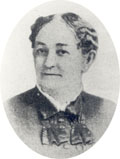
The history and future of women in dentistry
It’s undeniable that the landscape of the American workforce has changed since 1866, when Lucy Hobbs Taylor became the first woman to earn a degree in dentistry. As women have become legally equal to men and financially independent, the demographics of labor have shifted in many fields.
In honor of International Women’s Day and Women’s History Month, here’s a look at the changing role of women within the field of dentistry.
Early women in dentistry
Dentistry has been around since the earliest days of human civilization and has always been practiced in some form. It took until the 1700s for dentistry as we know it today to became more prominent. In all likelihood, women have always been performing dentistry, but it wasn’t until the mid-1800s that we see the first cases of women practicing in Sweden, the United States and Belgium.
In the United States, Emeline Roberts Jones was the first practicing female dentist, having taught herself basic fillings and extractions in secret. She joined her husband’s dental practice in 1855 and, after his passing, continued to practice on her own. She was elected to the Connecticut State Dental society in 1883 and was made an honorary member of the National Dental Association in 1914.
 Emeline Roberts Jones
Emeline Roberts Jones
In the early 1900s, some dental schools started experimenting with allowing female students, while others tacitly refused to accept them. During this period, there were only a few dozen female graduates from dental schools every year. Female dentists started professional groups to connect with each other. One of these groups was the American Association of Women Dentists, formed in 1921 and still active today.
During World War II, female dentists offered their skills to the U.S. Army but were flatly denied. Some dentists, like Sara G. Krout, got around this by joining volunteer emergency services. The wartime economy created job opportunities for women in heavy industry and other roles thought to be masculine. Female dentists were able to fill the roles left open by men joining the armed forces. In fact, women’s presence in the workforce during World War II is considered by many historians to be a key factor in the changes that were to come.
A shift: demographic changes after the 1960s
In the 1960s, the first generation of baby boomers turned 18 and the baby boom was taking a toll. Women who had multiple children by the time they were 25 still had 15 to 25 years of fertility to go. Some families were tucked into small homes, unable to afford larger spaces. Being able to contribute financially and control fertility was becoming more important than ever.
Growing alongside the civil rights and anti-war movements, the women’s liberation movement aimed to address inequality faced by women in legal and social contexts. Some of the many goals of the movement were to grant women reproductive rights, increase opportunities in the workplace and redefine familial roles. The Civil Rights Act of 1964 helped make it possible for women to go into professional fields by prohibiting discrimination based on sex.
After oral contraceptives were introduced in the 60s, women of all ages and marital statuses were able to postpone children or space out births. Birth control allowed them to pursue higher education and careers they may not have had in the past and social concepts of women as secondary earners were replaced by a two-income family model. Women also gained the right to apply for credit without a male co-signer in 1974, granting single women more financial freedom. The passing of the Pregnancy Discrimination Act in 1978 protected pregnant women from hiring discrimination.
Many fields have seen steady changes in their demographic breakdowns that coincide with these changes, and dentistry is no exception. Women accounted for only 11% of dental school graduates in 1978, according to the American Dental Association (ADA). In 2018, half of dental school graduates were women.
Women aren’t just getting their degrees in dentistry at higher rates; they’re also becoming leaders in dental education and professional associations. In 2010, there were 111 female assistant deans in dental schools, nearly seven times more than the 16 assistant deans in 1990. Kathleen T. O’Loughlin became the first female president of the ADA in 2009.
Women also represent a large portion of oral health–related jobs beyond dentistry. Of the 150,000 registered dental hygienists in the United States, 98% are female. Women make up 97% of dental office managers, according to a survey from 2019. About 93% of dental assistants are female. Half of dental laboratory technicians and medical appliance technicians are female.
Looking towards the future
Among the 201,117 dentists working in dentistry as of 2020, only 32% are female. That may seem low, but that figure is expected to rise as the number of women graduating from dental school and entering the workforce increases. In fact, women make up 60% of dentists under the age of 44 and show no signs of stopping.
It’s important to note that the overall change might be slow since the average age of retirement is rising. Americans age 50 and older hold over 20% of all student debt, which is affecting the rate at which they retire. Dentists are some of the most indebted professionals and their debt-to-income ratio is rising faster than other health care workers. The average dental school debt for the class of 2019 was $292,169. Assuming a 7% interest rate on a 10-year repayment plan, the average loan would require monthly payments of $3,390. Those student loans may cause delays in retirement savings and ultimately a higher percentage of dentists in their 70s.
Still, there are remain disparities in the field. Female dentists make 17.5% less than their male counterparts, according to the Department of Labor’s Women’s Bureau. And female dental assistants make 5% less than their male counterparts, despite making up almost 93% of their profession.
The formation of professional groups like Women in Dentistry and the American Association of Women Dentists gives female dentists a place to come together. With more women becoming mentors and take on leadership roles, the disparities are likely to shrink as dentistry becomes a more diverse and inclusive field.
Recent posts
- Delta Dental is partnering with dental schools to offer exclusive CE courses
- Drive better patient experiences with benefit conversations
- Offer care beyond the chair with teledentistry
- Healthy mouths begin with hygienists
- How to educate patients and make them partners in oral health
- Dr. Justin Perdichizzi — serving those who served
- Get your patients to make (and keep) their dental appointments
- One sign-on, many advantages
- Delta Dental hosts in-person Provider Advisory Council in Arizona
- Tooth be told, we love our dentists
